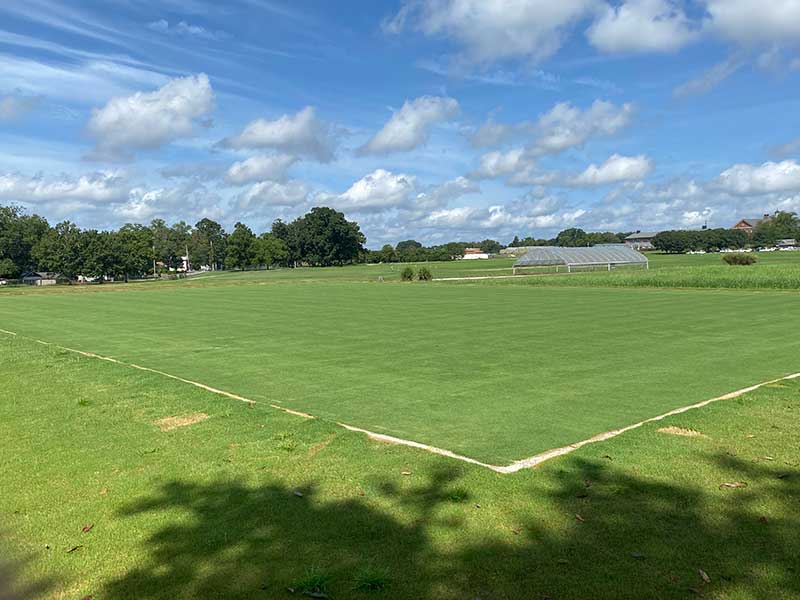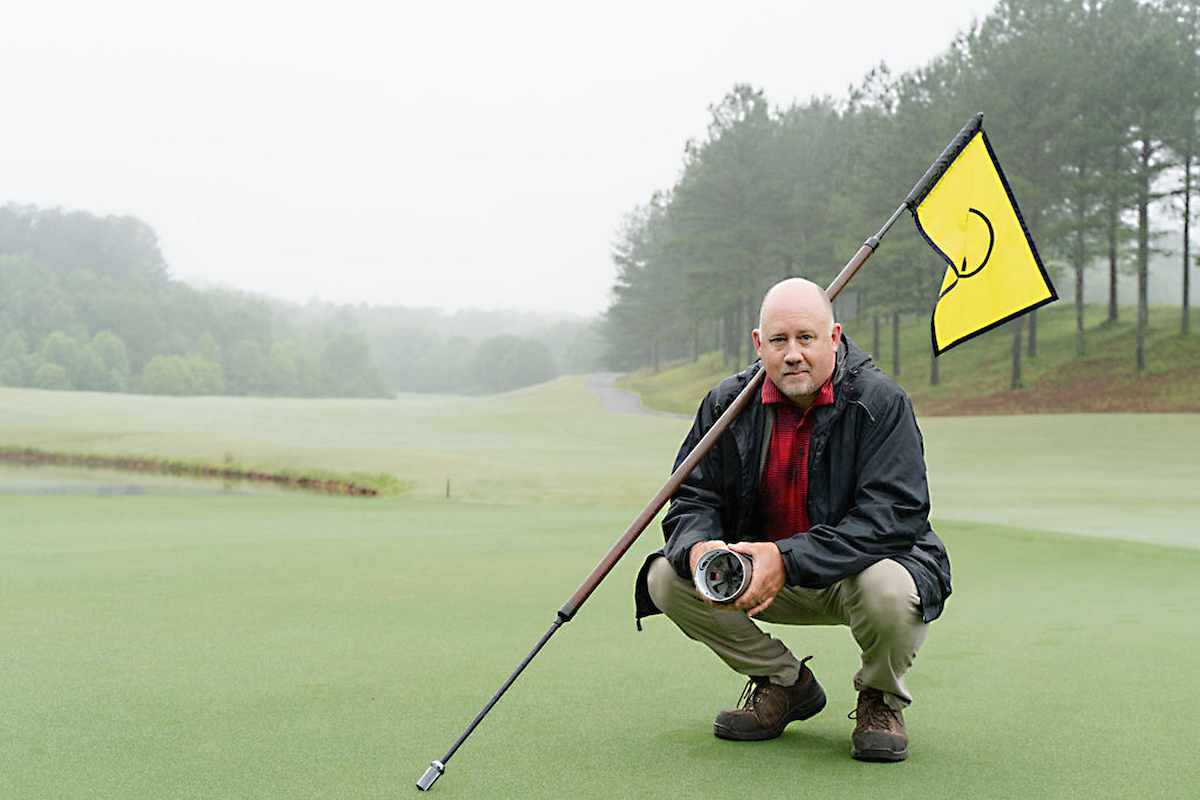
Any time you walk through a park, play a recreation-league soccer game or enjoy an afternoon on the golf course, you are using the products of the multibillion-dollar turfgrass industry. In Georgia alone, turfgrass covers 1.8 million acres, making it one of the largest agricultural commodities in the state, employing more than 100,000 people with a maintenance value of $1.56 billion.
Despite its economic importance, turfgrass researchers often face a lack of research infrastructure and facilities to conduct Extension and educational activities. That is no longer the case at the University of Georgia Griffin campus, where industry-funded partnerships have led to the installation of a research golf green and a research and Extension soccer field.
Together, Bayer Environmental Science, Green Tee Golf Inc., Sports Turf Company, NG Turf and Pike Creek Turf provided financial support for the facilities, which came at a fortuitous time, said Alfredo Martinez-Espinoza, a professor in the College of Agricultural and Environmental Sciences (CAES) Department of Plant Pathology.
“The need was being sensed by the industries for new and updated equipment and infrastructure,” said Martinez-Espinoza, UGA Cooperative Extension plant pathologist. “With the high quality of work UGA turfgrass faculty have done with them over the years, the companies viewed UGA-Griffin as a prime partner for these projects.”
Over 30,000 square feet of new fields
Bayer Environmental Science funded the construction of a 9,600-square-foot research golf green built to United States Golf Association (USGA) specifications. The project used a UGA-developed bermudagrass species known as TifEagle for the putting surface, and the experimental green has eight independent irrigation zones.
The golf green is strictly used for research and education purposes, giving researchers the opportunity to evaluate disease and physiological stress factors such as temperature extremes and soil quality.
This was followed by the installation of a 22,000-square-foot sports-field research and education area built as a soccer field with primary funding by Sports Turf Company. The area was sprigged with UGA-developed Tifway bermudagrass, one of the most popular varieties ever developed at the university. It is the same turf used in Sanford Stadium, home of the Georgia Bulldogs.
The soccer field allows faculty and students to perform research and Extension activities as well as hands-on learning. Martinez-Espinoza noted that this is a way to translate work from the lab and academics to the field, serving as experiential learning for students. The field is also used by the campus and local community several times a week for pickup games.
Connecting research and community outreach

“This is actually one aspect that is unique to our campus,” said Martinez-Espinoza. “It gives you the chance to interact with other colleagues, staff and students who you normally would not see or interact with. It gives us the chance to be active while helping with research and outreach missions. The community also uses the field, which is a way we can bring people to campus. It gives us the chance to amplify the effect UGA-Griffin has on the community.”
The construction of the golf green and soccer field began in early 2020, right before the COVID-19 pandemic hit the states. It was not long before looming deadlines and COVID protocols threatened to derail the projects. Thanks to the teamwork of industry partners and UGA-Griffin faculty, staff and students, the projects came together.
“Fortunately, all of our work was outside and we were able to follow COVID protocols and have everyone work together in a safe manner,” said Martinez-Espinoza. “Now we have these facilities that can last for a good while and we are able to use them in the UGA mission of research, education and outreach. As COVID guidelines continue to ease, we will be able to use them even more.”
Martinez-Espinoza said the projects were made possible with the support of the university and several CAES and Extension faculty, including David Buntin, interim assistant provost and campus director for UGA-Griffin; Harald Scherm, plant pathology department head; and Clint Waltz, Extension turfgrass specialist.
“These projects allow us to create up-to-date infrastructure that is state-of-the-art. We have been able to use this to strengthen partnerships with industries. These facilities give us the chance to develop, highlight and enhance research,” Martinez-Espinoza said. “The final goals of these infrastructure projects are to provide turfgrass managers with new and improved disease and physiological stress management tools and better turf quality in Georgia. We will be able to use these areas for years to come.”



